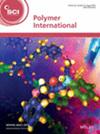求助PDF
{"title":"Calcium hydroxyapatite powders functionalized with xanthan gum and pectin biopolymers: synthesis, characterization and adsorption efficiency toward methylene blue","authors":"Nabil Mabrouki, Hassen Agougui, Mariem Brahim, Mahjoub Jabli, Faridah Sonsudin, Khaled Boughzala","doi":"10.1002/pi.6720","DOIUrl":null,"url":null,"abstract":"<p>The precipitation technique was used to prepare calcium hydroxyapatite pectin (CaHAp-Pec) and calcium hydroxyapatite xanthan (CaHAp-Xan) hybrid materials. Chemical analysis, XRD, Fourier transform infrared spectroscopy, specific surface area, TGA and SEM were used to analyze the materials and the organic–inorganic interfaces. XRD and SEM investigations demonstrated that the presence of the biopolymer had an impact on both the structural and morphological properties as well as the crystallinity. The PO<sub>4</sub><sup>3−</sup> vibration modes are visible in the IR spectra, and new vibration modes mostly associated with Xan and Pec are observed at 1594, 2878 and 3246 cm<sup>−1</sup>. The specific surface area values were reduced after the chemical functionalization of CaHAp with pectin and xanthan gum. The ability of the three materials CaHAp, CaHAp-Pec and CaHAp-Xan to sorb methylene blue from aqueous solutions was assessed. The adsorption kinetics results best fitted the pseudo-second-order model. The isotherm data agreed well with the Freundlich model. The adsorption capacity values of porous composites CaHAp-Xan 5%, CaHAp-Pec 10% and CaHAp reached 277, 243 and 144 mg g<sup>−1</sup>, respectively. The non-spontaneous and exothermic nature of the adsorption was demonstrated by the thermodynamic parameters (Δ<i>G</i><sup>0</sup>, Δ<i>H</i><sup>0</sup> and Δ<i>S</i><sup>0</sup>). Adsorption results confirmed that CaHAp-Xan could be used as an effective adsorbent of cationic dyes from water. © 2024 Society of Chemical Industry.</p>","PeriodicalId":20404,"journal":{"name":"Polymer International","volume":"74 3","pages":"264-276"},"PeriodicalIF":2.9000,"publicationDate":"2024-11-20","publicationTypes":"Journal Article","fieldsOfStudy":null,"isOpenAccess":false,"openAccessPdf":"","citationCount":"0","resultStr":null,"platform":"Semanticscholar","paperid":null,"PeriodicalName":"Polymer International","FirstCategoryId":"92","ListUrlMain":"https://onlinelibrary.wiley.com/doi/10.1002/pi.6720","RegionNum":4,"RegionCategory":"化学","ArticlePicture":[],"TitleCN":null,"AbstractTextCN":null,"PMCID":null,"EPubDate":"","PubModel":"","JCR":"Q2","JCRName":"POLYMER SCIENCE","Score":null,"Total":0}
引用次数: 0
引用
批量引用
Abstract
The precipitation technique was used to prepare calcium hydroxyapatite pectin (CaHAp-Pec) and calcium hydroxyapatite xanthan (CaHAp-Xan) hybrid materials. Chemical analysis, XRD, Fourier transform infrared spectroscopy, specific surface area, TGA and SEM were used to analyze the materials and the organic–inorganic interfaces. XRD and SEM investigations demonstrated that the presence of the biopolymer had an impact on both the structural and morphological properties as well as the crystallinity. The PO4 3− vibration modes are visible in the IR spectra, and new vibration modes mostly associated with Xan and Pec are observed at 1594, 2878 and 3246 cm−1 . The specific surface area values were reduced after the chemical functionalization of CaHAp with pectin and xanthan gum. The ability of the three materials CaHAp, CaHAp-Pec and CaHAp-Xan to sorb methylene blue from aqueous solutions was assessed. The adsorption kinetics results best fitted the pseudo-second-order model. The isotherm data agreed well with the Freundlich model. The adsorption capacity values of porous composites CaHAp-Xan 5%, CaHAp-Pec 10% and CaHAp reached 277, 243 and 144 mg g−1 , respectively. The non-spontaneous and exothermic nature of the adsorption was demonstrated by the thermodynamic parameters (ΔG 0 , ΔH 0 and ΔS 0 ). Adsorption results confirmed that CaHAp-Xan could be used as an effective adsorbent of cationic dyes from water. © 2024 Society of Chemical Industry.



